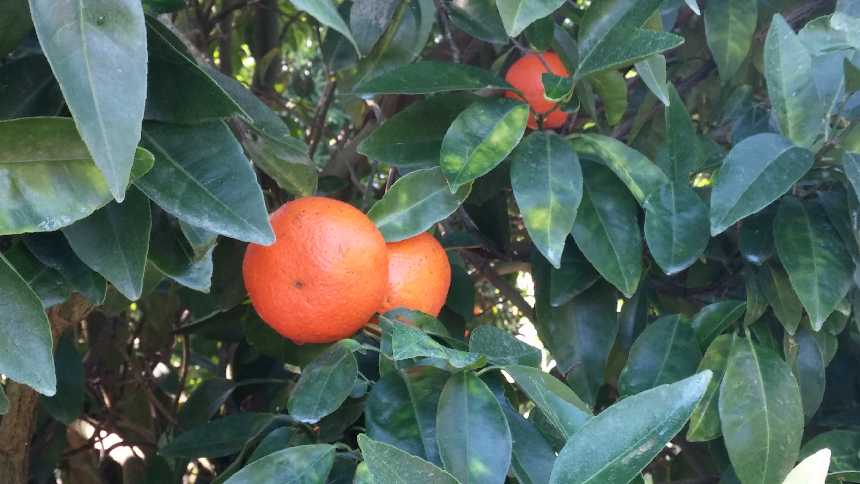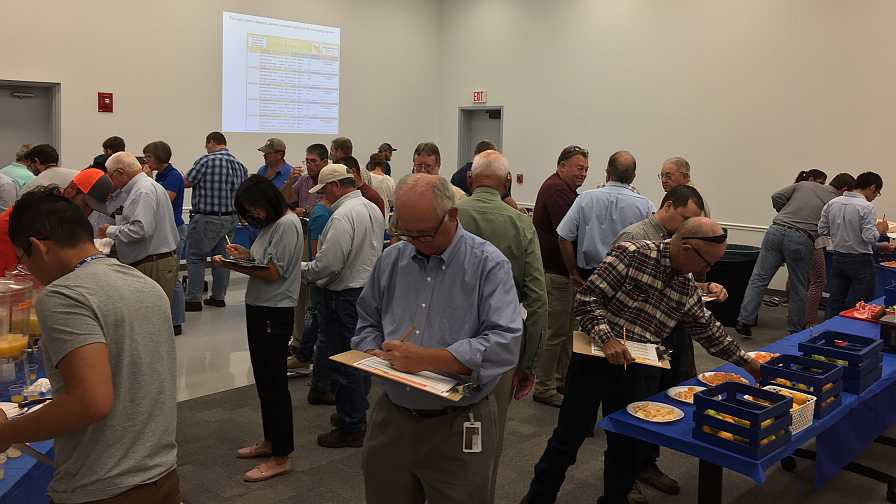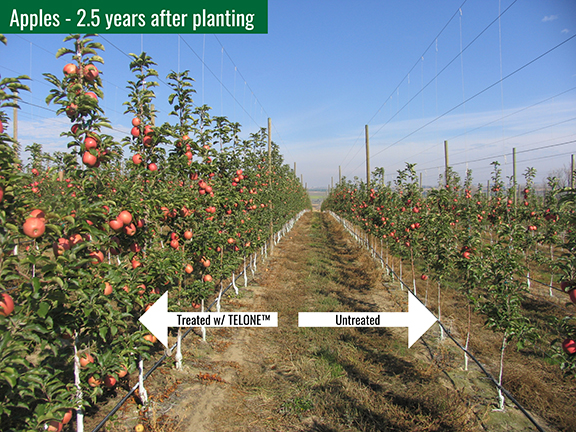Why Citrus Classification Needs More Flexibility in the Age of HLB

‘Sugar Belle’ is an example of citrus fruit without an official classification. Is it a tangerine, tangelo, orange, or something else? Photo courtesy of UF/IFAS
There is certainly no shortage of regulations, statutes, and rules governing Florida’s citrus industry. This fact is particularly obvious to those new to the party. It is sometimes puzzling why an industry would self-impose such a situation. Was the master plan to regulate ourselves into prosperity? Quite the contrary. Every regulation on the books was designed and requested by the industry to serve a particular purpose at a particular time. However, times change and regulations sometimes have to change with them. Rules that served a purpose during periods of oversupply can actually hinder or overly restrict during periods of tight supply. When drafting regulatory language, it is impossible to anticipate all the future will bring. Such is the case with the process for citrus classification in Florida.
Florida Citrus Rule 20-13.001 outlines the requirement for classification of varieties and 20-13.004 further provides that each newly developed variety or hybrid be classified as an orange, grapefruit, tangerine, tangelo, or other. Thankfully, those who crafted this rule, included the language, “A citrus variety or hybrid shall be classified as orange, grapefruit, tangerine (which now links to mandarin under specific standards), or tangelo if it resembles one or more established varieties of orange, grapefruit, tangerine, or tangelo and can be acceptably marketed as such.”
This language does provide some flexibility (it was wise not to force classification on the basis of what the parents were, but to focus more on fruit characteristics), but it still does not address some of the challenges presented by today’s complex hybrids and market demands. Chapter 601 (Florida Citrus Code) also has some variety definitions that serve to frame the discussion, but it appears that adjustments may be needed to again reach the point where the rules serve the needs of industry.
Marketing to Demand
Why is this important and why is this of interest to nurseries and growers? This is an increasingly important issue, because growers are not going to plant a variety unless they know that it will be marketable and profitable. We search long and hard for fruit characteristics that have the potential to drive fruit demand, but sometimes there are other factors driving tree demand. Sometimes the classification of a variety can significantly impact how the fruit can be marketed and the value of the fruit in the marketplace.
Some citrus classification cases are easy. ‘Murcott’ honey tangerine is a tangor and was classified as a tangerine because it looks and tastes like a tangerine and consumers accept it as such. LB8-9 ‘Sugar Belle’ is a more complex case. Despite the fact that more than 1,000 acres are either growing or in process, ‘Sugar Belle’ has not been classified. The industry has not been able to agree where it belongs. Some growers and packers have a market for ‘Sugar Belle’ as a tangelo. Others want it classified into the “other” category as it is unique and doesn’t truly fit into orange, tangelo, or tangerine. However, classification into the “other” category would mean that the fruit would only be sold as ‘Sugar Belle.’ Some want the large fruit to be called tangelo, since the appearance is close to a ‘Minneola,’ and the small fruit classified as tangerines.
Some growers would prefer no rule at all and total freedom to market however they wish and follow the demand. Each scenario and opinion is based on the market served by the grower/shipper and where they believe they can maximize the value of the crop. One person’s market approach is no more legitimate than another, but there must be some consistency in order to avoid market confusion.
Consistency is probably most important when critical mass has not yet been achieved.
Processed Considerations
Citrus classification is largely a fresh market function. Though its not expressly stated in the rule, the processed market is guided by federal standards of identity. These standards are under examination and discussion, but until or whether industry seeks a change, these standards compose a frame within which processed product must remain. What is important to processors is identification of the parentage and basic descriptions of the genetics in order to make their own determination of compliance with the standard. For fresh producers, it’s all about marketability and consumer acceptance.
One of the ways that conventional breeding is supporting the fight against HLB is to tap into the genetic diversity of citrus by producing crosses that will result in orange-like and grapefruit-like fruit. Such fruit has the flavor and appearance of other varieties in the category but may not have the genetics or parentage of other varieties traditionally included in the category. These orange-like and grapefruit-like selections will ultimately segregate for HLB tolerance and may play a factor in discussions about the standards of identity. However, some of these hybrids that appear to be commercially useful, but do not resemble other varieties in the traditional categories, will be difficult to classify within the existing language of rule and statute.
It may be time to take a new look at Florida Statutes (Florida Citrus Code, Chapter 601) and Florida Citrus Rules to ensure new varieties will be adopted by the industry, that their value can be maximized, and the Florida Department of Citrus and Florida Department of Agriculture and Consumer Services Division of Fruits and Vegetables are able to track the crop and perform their necessary support functions. The industry can ill afford to have regulations impede progress toward new plantings of HLB-tolerant and marketable crops, and any changes must be done in a sensible and inclusive manner.

The October UF/IFAS Variety Display was very well attended by most segments of the industry.
Photo by Peter Chaires
Variety Display Gaining New Importance
We are seeing a seismic shift in the purpose and function of the variety displays. We held the first October display in quite some time, and it was very well attended. What made it particularly significant was the composition of the participants and the amount of time spent in the evaluation. We had processors, processed growers, packers, fresh growers, flavor and essence company representatives, gift fruit packers, and marketers.
Three selections were expected to be of interest to the processing audience. Each were shown in fresh and juice form. One was an early orange-like hybrid with very good flavor, color, and juice content. The other two were pink grapefruit-like hybrids that had exceptional brix and flavor for October.
What was particularly interesting was the amount of time the audience spent going through the display, sampling every fruit type for possible application in their particular industry segment.
Perhaps recent discussions of the possible value of orange-like and grapefruit-like hybrids in the juice stream has expanded and changed the focus of variety displays. A strong focus on breeding orange, grapefruit, and specialty hybrids over the past decade-plus will continue to fuel these displays and provide ample material for continued evaluation.
Remaining Display Opportunities for 2019-2020
- Dec. 10, 2019 – UF/IFAS Variety Display CREC, Lake Alfred, 10 a.m.
- Jan. 16, 2020 – UF/IFAS Variety Display IRREC, Fort Pierce, 10 a.m.
- Feb. 14, 2020 – UF/IFAS Variety Display CREC. Lake Alfred, 10 a.m.










